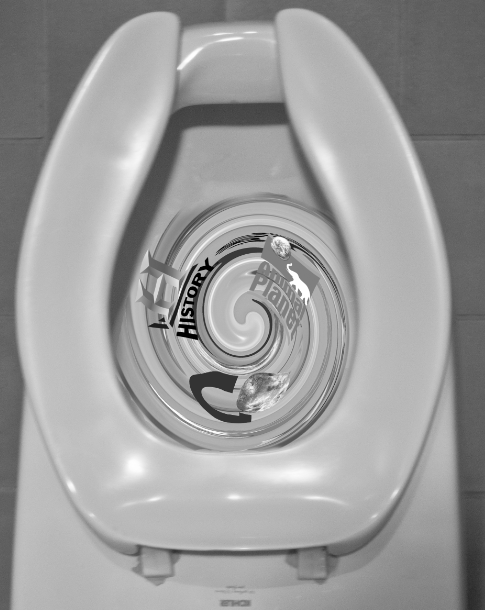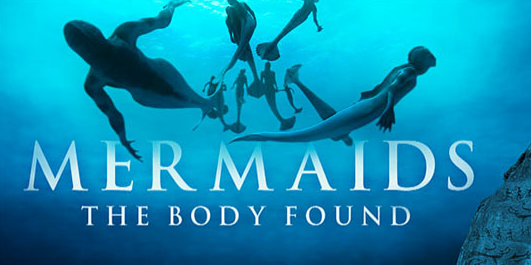Mermaids, Monsters and More: The Death of Smart TV
Thomas Curran-LevettTHE SANTA CLARANovember 13, 2014
[dropcap]T[/dropcap]hose who cannot remember the past are condemned to repeat it.
With that in mind, we must all take the time to thank the History Channel for saving us from giants, ancient aliens, marauding pawnshops and a man named Codfish who claims to be something called a “dickerer.”
Launched in 1995, the History Channel nobly offered viewers educational programming that, as Michael Ollove of “The Baltimore Sun” noted a year and a half after its inception, “has been both a marvel and vindication, especially for any history teacher who has ever witnessed a student’s eyes glaze over.”
Now, the History Channel is a shell of its former self. The station used to offer so much war footage that it was jokingly known as “The Hitler Channel.”
Today we are blessed with programs like “Swamp People,” which has followed barely coherent Louisianans as they graphically kill alligators for five seasons and counting, and “Ax Men,” which has covered logging companies for seven seasons.
The History Channel is not the only “educational” channel that has abandoned its message for ratings. Once celebrated for its science-based programing, the Discovery Channel and Animal Planet are similarly chasing viewers.
In 2012, Animal Planet premiered “Mermaids: The Body Found,” a “docufiction.” In it, actors posing as scientists perpetuate the hoax of the existence of mermaids with fake video footage and fabricated evidence. Despite outrage over the once-trusted networks passing off lies as the truth, 3.4 million people viewed the program, in what was the Animal Planet’s most watched broadcast since the 2006 Steve Irwin memorial special.

Not to be outdone, during its popular and educational yearly series Shark Week, the Discovery Channel aired “Megalodon: The Monster Shark Lives” in 2013, following it up with “Megalodon: The New Evidence” in 2014. These docufictions also present fake evidence from phony experts and received harsh public outrage.
That outrage was reflected by a sharp hit to viewership. A Shark Week record 4.8 million people watched the first Megaladon special, but the next monster shark episode saw a dip to a mere 3.8 million viewers.
While it seems that roughly a million people weren’t eager to be fooled a second time by the Discovery Channel, the sequel was still the most watched program of the night. Encouraged by this, Discovery is at it again, albeit this time with snakes instead of sharks.
The show “Eaten Alive,” which will cover a man in a “custom built snake-proof suit” being eaten alive by an anaconda, will air next month and join the heralded ranks of Discovery Channel documentaries that provide little to no educational value.
The meal is filmmaker and naturalist Paul Rosolie. While he claims the stunt will be harmless to the snake, animals rights activists and herpetologists (who study snakes) are less sure. As an online petition to stop the airing of “Eaten Alive” shows, over 25,000 supporters agree that “This is animal abuse to the highest degree and absolutely disgusting.”
Why is yet another once educational network stooping to an all time low by risking an animal’s life on national television? Because millions of us are going to watch it. We are going to bring the advertisers, and we are going to draw the revenue that the network so desperately craves.

Chasing ratings is causing the credibility of educational television to take a nosedive. Now, in that chase, an animal will likely be killed for our enjoyment. What’s next?
I propose that we the viewers do something about this before we have to find out what’s next. A dip of one million viewers wasn’t enough to stop it. How about two million? Three? If we don’t watch it, the networks won’t do it. It’s as simple as that.
Thomas Curran-Levett is a junior political science major and the editor of the Opinion section.